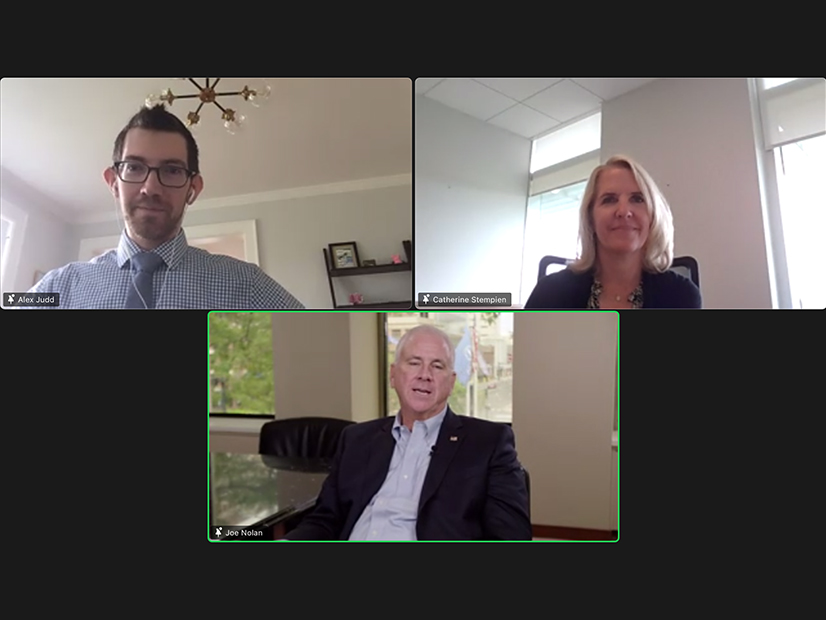
When Catherine Stempien, CEO of Avangrid Networks (NYSE:AGR), and Eversource Energy (NYSE:ES) CEO Joe Nolan were asked during the Connecticut Power and Energy Society’s “Power Hour” virtual event Thursday about how the state’s two largest utilities can help it reach decarbonization and greenhouse gas reduction goals, each of them took a slightly different path but ultimately had a common thread their respective answers: alignment.
“I would love to be queen of the United States in the transmission and distribution grid and tell people what’s the optimal way to efficiently deploy clean energy, fast and efficiently for the lowest cost,” said Stempien, who leads Avangrid’s largest business unit, with 3.3 million electric and gas customers through eight companies in Maine, Connecticut, New York and Massachusetts. “We’re not doing that in the United States right now. We’re very patchwork.”
Stempien added there needs to be “alignment on where the generation should go and where the grid needs the most work,” whether it is electric vehicle home charging and along transmission corridors, or interconnecting renewable energy sources to the grid. “All of those elements are going to be needed in order to meet the clean energy future.”
For Nolan, alignment on Connecticut’s “very lofty goals” of carbon-free electricity by 2040 and an 80% reduction in GHG by 2050 is essential to him because mending the utility’s relationship with the state has been one of his top priorities since taking charge of the company this spring.
“It’s great to be partners with the state on these initiatives because that’s what’s going to drive the change that we want in terms of a vibrant transmission grid,” Nolan said. “We are investing heavily in our grid to unlock all of these renewable options so that we can reduce congestion and bring about the cleanest kilowatt-hour that’s available to our customers.”
Stempien and Nolan are additionally aligned on climate change in terms of adaptation and mitigation measures necessary in the face of more frequent extreme weather events. They both came into their jobs in the wake of United Illuminating’s and Eversource’s highly criticized responses to Tropical Storm Isaias in August 2020, which also prompted legislative action to hold the utilities more accountable and force more significant preparation.
The “unpredictability” of storms, according to Stempien, reinforces “the need for us to build resilient systems.” That includes examining everything from flood mitigation at substations to moving power lines underground.
“Typically, people always think of underground being a much more expensive alternative, but with the increasing number of storms, depending on where you are, undergrounding may now be, in fact, the better solution because it is avoiding all of these trees coming down,” Stempien said.
Regarding trees, Nolan said Eversource would invest more than $72 million this year on tree trimming and removal, as the “single greatest cause of power outages” in Connecticut is downed trees falling on power lines, which can also block roads and further slow restoration work. Nolan said that Eversource has partnered with several cities and towns in the state on the effort.
“We’re out there helping them take care of any danger trees, but the other thing I think it’s been very helpful to us to demonstrate to them or show a danger tree that’s going to impact a particular line, and what’s on that line,” Nolan said.
He added that the utility is not indiscriminately removing trees.
“We have multiple arborists that could well talk about each of these trees and talk about whether they are healthy or unhealthy; whether this particular branch is going to impact the power line,” Nolan said. “I think the fact that we bring our ‘A’ game when we go to see these towns, they understand what’s at stake.”

